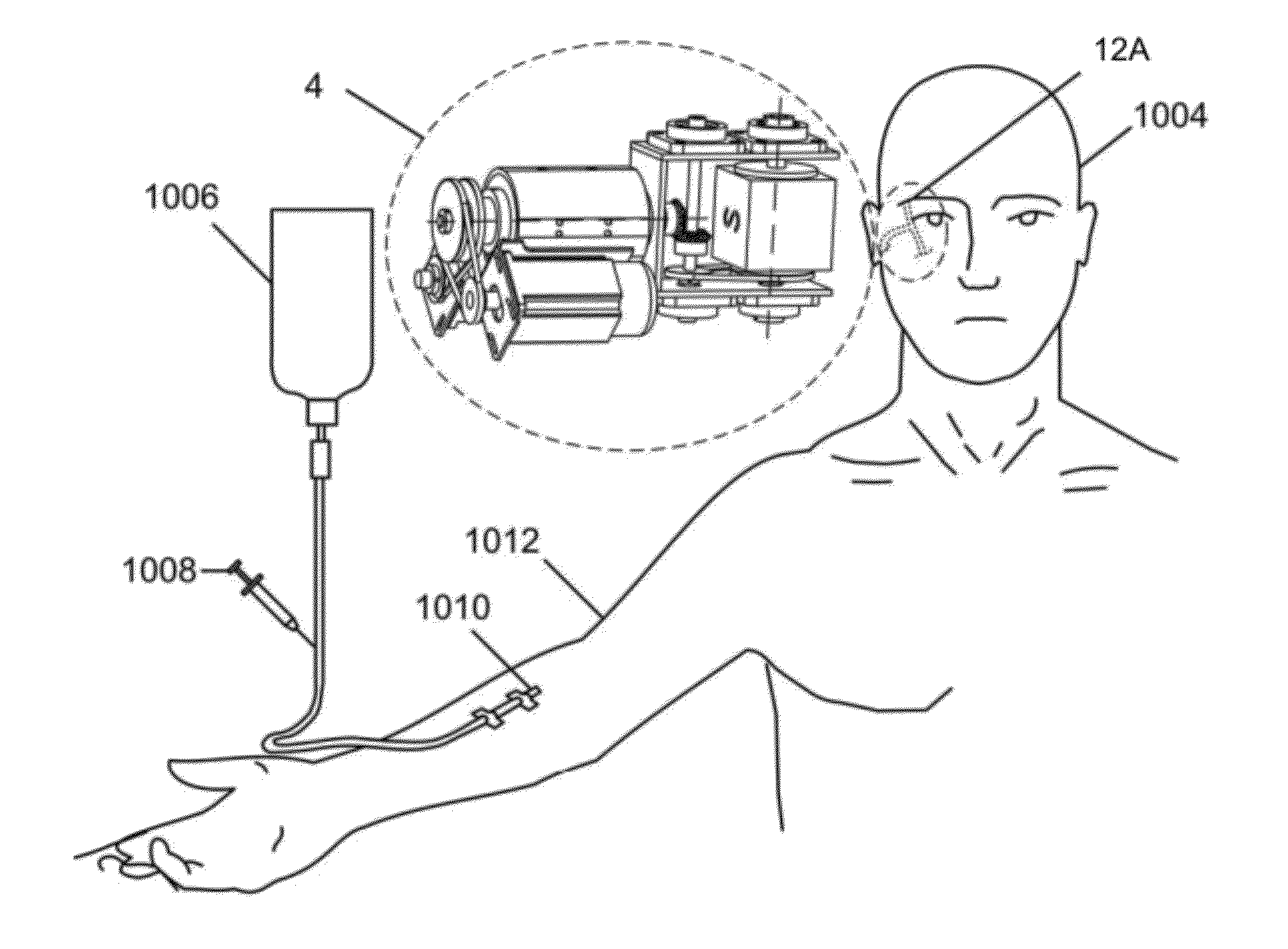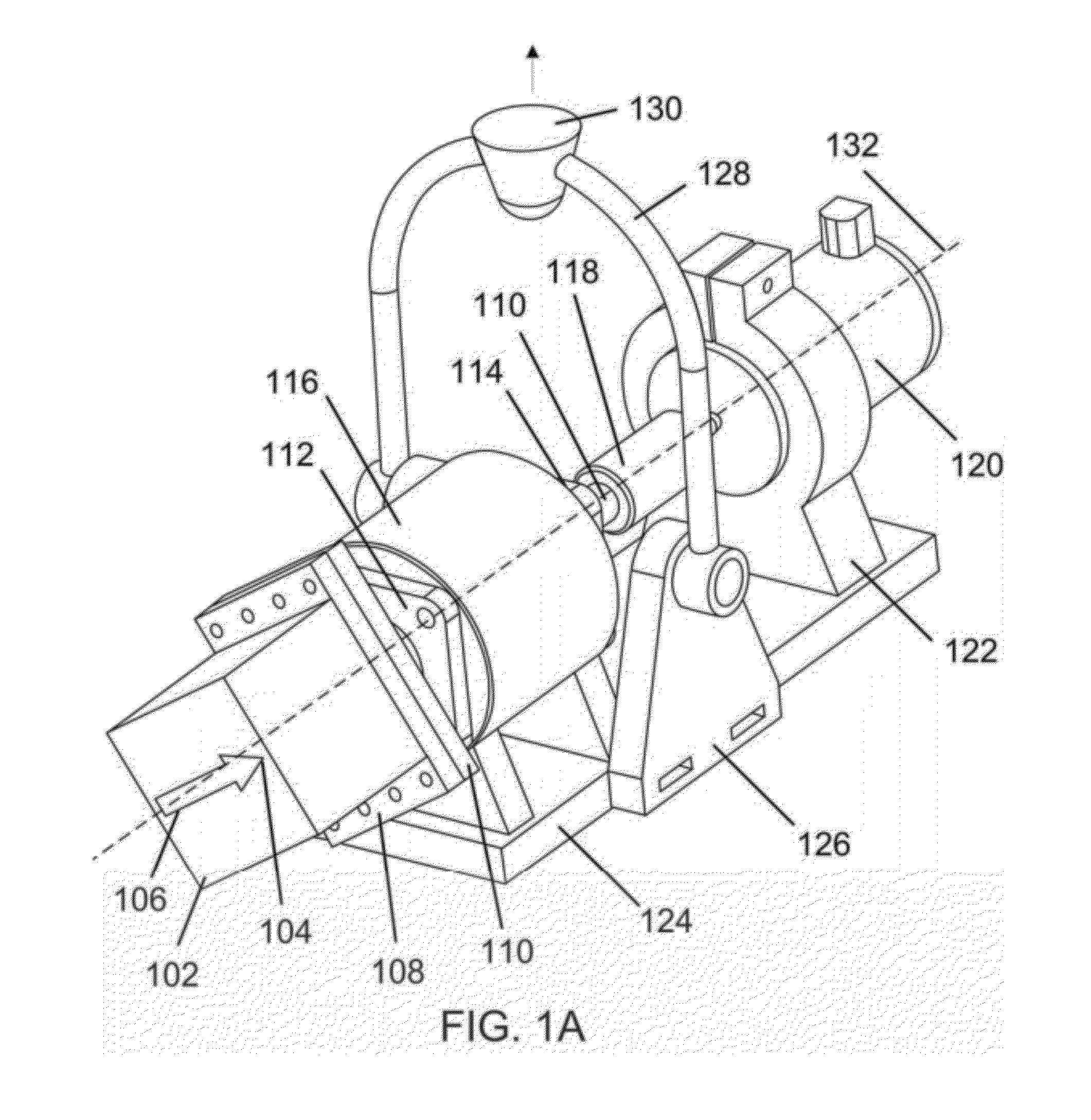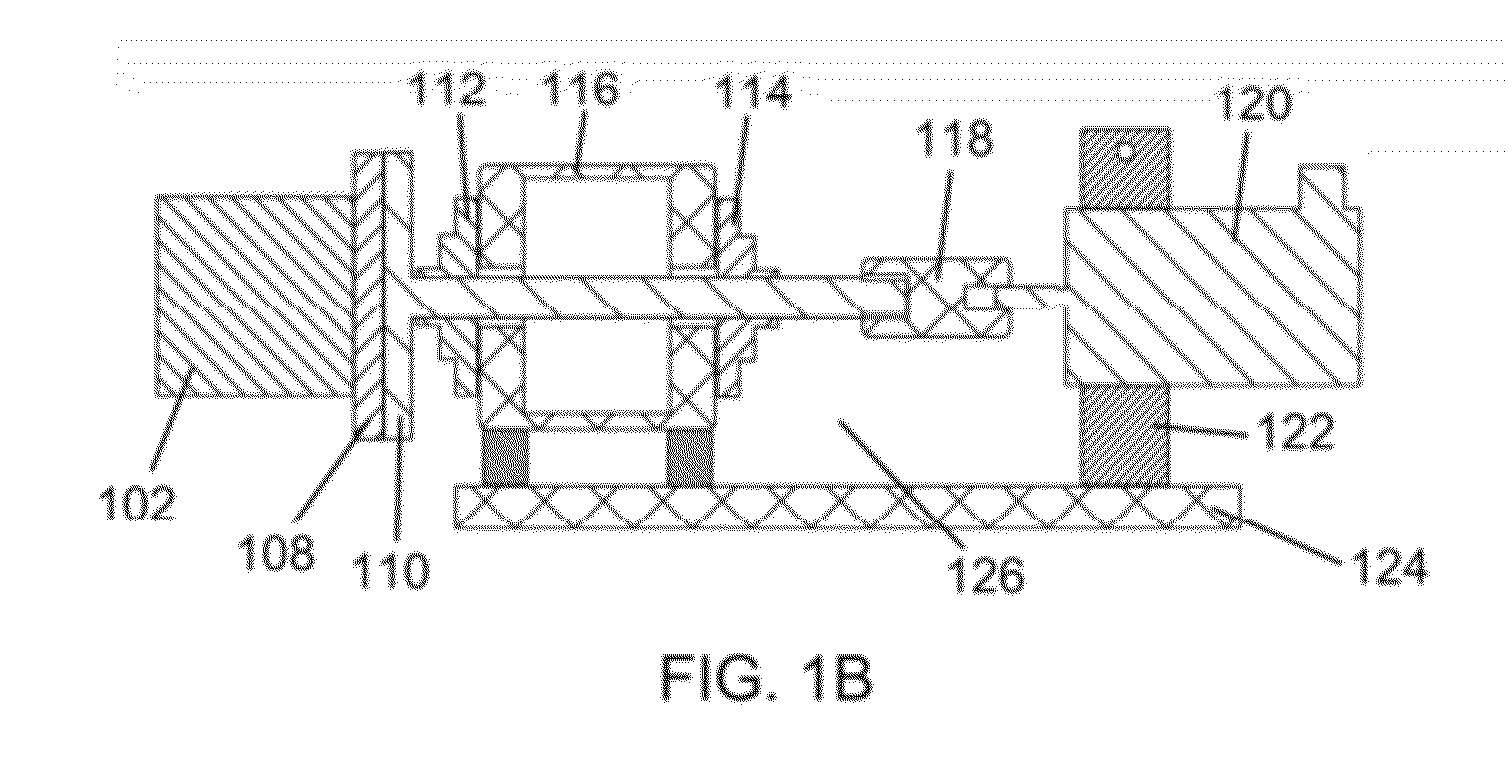Magnetic-based methods for treating vessel obstructions
a technology of magnetic-based methods and obstructions, applied in the field of magnetic-based methods for treating vessel obstructions, can solve problems such as unintended or secondary tissue damage, difficult control, etc., and achieve the effect of increasing the diffusion rate of drugs
- Summary
- Abstract
- Description
- Claims
- Application Information
AI Technical Summary
Benefits of technology
Problems solved by technology
Method used
Image
Examples
example 1
Administration of Magnetic Nanoparticles to Rabbits
[0275]Anesthetized rabbits were used to create an endovascular obstruction model by using the jugular veins and generating a clot at this location using thrombin, a natural product that produces blood clots. Once a stable clot was established, tPA (an enzyme commonly used to dissolve clots in endovascular obstruction patients), and magnetic nanoparticles were directed to the clot location and the length of time to dissolve the clot was recorded. See FIG. 38. After varying time points, the animals were euthanized, the remaining clots were weighed and analyzed and tissues were collected to ensure that there was no damage to the vessel itself.
[0276]The endovascular obstruction model allows the determination whether the magnetomotive stator system can re-open a vein or artery faster than with tPA alone, and if the dosage of tPA can be reduced without causing damage to the vein. The data gathered from the present endovascular obstruction...
example 2
IV-Administered Nanoparticles can be Collected in an In Vivo Ligated Rabbit Femoral Artery
[0298]New Zealand White rabbits were used as in Example 1, except the femoral artery was used. Through a 3-4 cm incision in the lower abdomen, the left femoral artery was isolated from the iliac bifurcation to the abdominal wall, and all branches were tied off. Blood flow in the artery and the abdominal aorta were monitored continuously with a Transonics Doppler flow probe coupled to a Transonics T206 meter.
[0299]In this example, an acute, anesthetized rabbit model of arterial occlusion was used in which the right femoral artery was isolated and ligated to simulate an occlusive thrombus and create a static blood pool. Magnetic nanoparticles (200 mg / kg) were infused intravenously over 15 minutes and collected with the magnet system. The presence of a significant mass of nanoparticles at the ligation was confirmed for each animal.
example 3
The Action of Pulling IV-Administered Nanoparticles Out of the Stream can Concentrate a Drug Faster than Diffusion Alone
[0300]Evans Blue dye (50 mg) was infused alone over 15 minutes and co-infused with magnetic nanoparticles in the presence of the magnet system, using the rabbit model of Example 2. The advancement of the dye in the occluded artery was captured and quantified by image analysis. The results demonstrated that diffusion alone quickly diminished, achieving 35% penetration of a ligated vessel an hour after administration. Full diffusion was accomplished in 25 minutes using magnetic nanoparticles, whereas full diffusion was not possible with the dye alone. The rate of diffusion remained strongly linear for the magnetic nanoparticles, with a volume penetration rate of 4% per minute, as shown in the graph in FIG. 38. FIG. 38 illustrates a graph of the exhausted diffusion of Evan's blue dye alone versus complete diffusion using magnetic nanoparticles.
PUM
| Property | Measurement | Unit |
|---|---|---|
| diameter | aaaaa | aaaaa |
| diameter | aaaaa | aaaaa |
| length | aaaaa | aaaaa |
Abstract
Description
Claims
Application Information
 Login to View More
Login to View More - R&D
- Intellectual Property
- Life Sciences
- Materials
- Tech Scout
- Unparalleled Data Quality
- Higher Quality Content
- 60% Fewer Hallucinations
Browse by: Latest US Patents, China's latest patents, Technical Efficacy Thesaurus, Application Domain, Technology Topic, Popular Technical Reports.
© 2025 PatSnap. All rights reserved.Legal|Privacy policy|Modern Slavery Act Transparency Statement|Sitemap|About US| Contact US: help@patsnap.com



